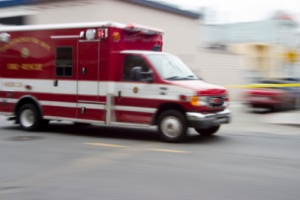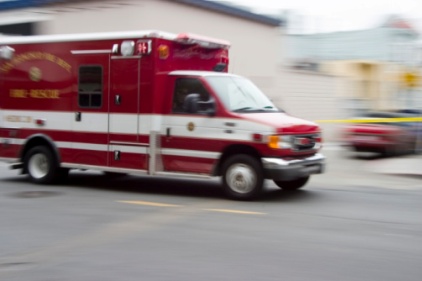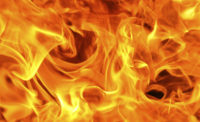 In September 2010, a 48 year-old male worker (Victim I) employed by a village Department of Public Works (DPW) and a 51 year-old male volunteer firefighter (Victim II) of the village Fire Department (FD) died after entering a sewer manhole.
In September 2010, a 48 year-old male worker (Victim I) employed by a village Department of Public Works (DPW) and a 51 year-old male volunteer firefighter (Victim II) of the village Fire Department (FD) died after entering a sewer manhole.
The manhole was located behind the fire house. The Fire Chief and a firefighter were called in by the DPW general foreman (GF) to unlock the firehouse and move the fire truck so it would not be blocked by the DPW utility truck while working at the manhole. Victim II also arrived to offer assistance.
The manhole was five feet in diameter and 18 feet deep with an opening 24 inches in diameter.
Victim I started climbing down the metal rungs on the manhole wall wearing a Tyvek suit and work boots in an attempt to clear a sewer blockage.
The DPW GF, the firefighter and Victim II walked over to observe. They saw Victim I lying on the manhole floor motionless. They speculated that he had slipped and fallen off the rungs and injured himself. The Fire Chief immediately called for an ambulance.
Meanwhile, Victim II entered the manhole to rescue Victim I without wearing any respiratory protection. The firefighter saw that Victim II fell off the rungs backwards while he was half way down and informed the Fire Chief. The Fire Chief immediately called for a second ambulance and summoned the village FD to respond.
The FD responders arrived within minutes. The Assistant Fire Chief (AFC) donned a self-contained breathing apparatus. He could not go through the manhole opening with the air cylinder on his back.
The cylinder was tied to a rope that was held by the assisting firefighters at the ground level. The AFC entered the manhole with the cylinder suspended above his head. He did not wear a lifeline although there was a tripod retrieval system. He secured Victim II with a rope that was attached to the tripod. Victim II was successfully lifted out of the manhole.
The AFC exited the manhole before a second rescuer entered the manhole and extricated Victim I in the same manner. Both victims were transported to an emergency medical center where they were pronounced dead an hour later.
The cause of death for both victims was asphyxia due to low oxygen and exposure to sewer gases.
Contributing Factors
Contributors to the DPW worker's death:
- DPW no-entry policy for permit-required confined spaces was not enforced
- DPW permit-required confined space program was not implemented
- Employees were not trained on confined space hazards, and proper entry and rescue procedures
Contributors to the firefighter's death:
- Firefighters were not trained in confined space rescue procedure
- FD confined space rescue protocol was not followed
- Standard operating procedure (SOP) was not established for confined space rescue
Key Recommendations
For employers with permit-required confined spaces:
- Implement a permit-required confined space entry program
- Provide worker training on confined space hazards, and safe entry and rescue procedures
- Prohibit any worker from entering a permit-required confined space without following safe entry procedures
- Evaluate all tasks to be performed within confined spaces and make feasible modifications to reduce worker entries
For fire departments:
- Develop and implement an SOP for confined space rescue operations
- Provide all firefighters with training on assigned duties during confined space rescue operations according to the SOP
- Ensure that all firefighters strictly follow the SOP during confined space rescue operations
- Survey and evaluate the representative confined spaces within the fire district and provide appropriate rescue equipment
For municipalities:
Ensure newly constructed manholes have large enough openings for rescuers to enter with all necessary personal protective and rescue equipment
Source: New York State Department of Health; www.health.ny.gov


